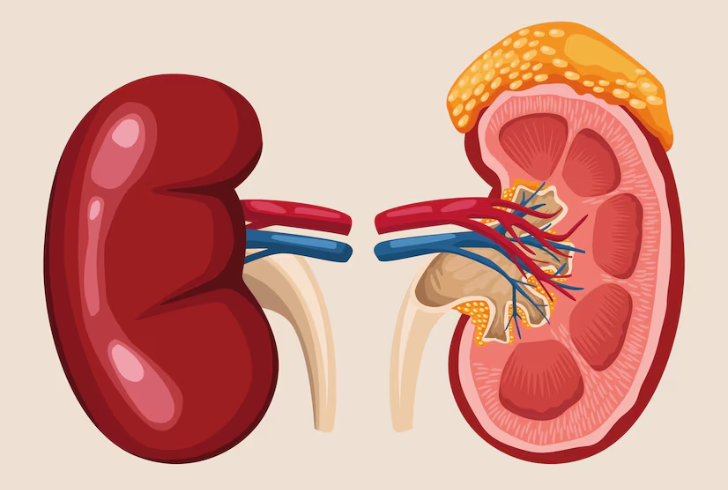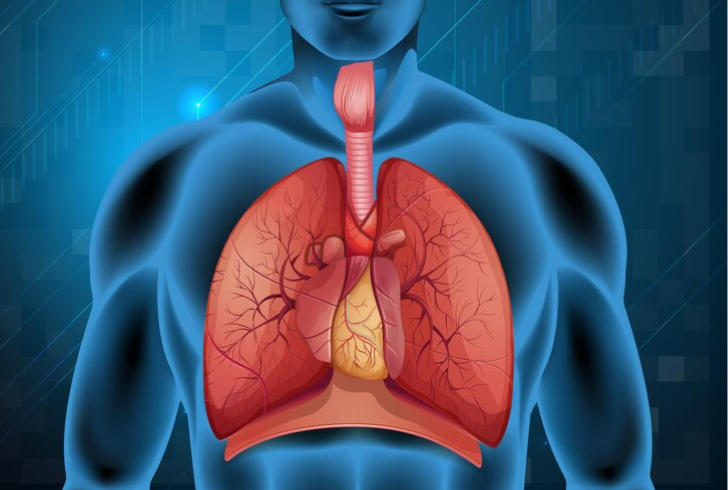When it comes to understanding the human body's anatomy, it's fascinating to compare different organs and their functions. A common question that arises in this context is: are the kidneys inferior to the lungs? Anatomically speaking, yes, the kidneys are indeed inferior to the lungs.
Let's delve deeper into this topic to understand why and explore these organs' distinct roles in our body.
Understanding Anatomical Positions

Freepik | The lungs are located in the thoracic cavity, which is the chest area.
To answer the question, "Are the kidneys inferior to the lungs?" we need to understand the concept of anatomical positions. In anatomical terms, "inferior" refers to a position lower down on the body.
The lungs are located in the thoracic cavity, which is the chest area, while the kidneys are positioned in the abdominal cavity, beneath the lungs. Therefore, the kidneys are anatomically inferior to the lungs.
The Role of the Lungs
The lungs are a vital part of the respiratory system, responsible for the essential process of gas exchange. They bring in oxygen from the air we breathe and expel carbon dioxide, a waste product of metabolism. The lungs are housed within the rib cage, providing them with protection and support. This positioning allows for the efficient exchange of gases, critical for maintaining the body's overall function.
Key Functions of the Lungs:
- Oxygen Intake: Absorbing oxygen from inhaled air into the bloodstream.
- Carbon Dioxide Removal: Expelling carbon dioxide from the bloodstream into exhaled air.
- Acid-Base Balance: Helping maintain the body's pH balance by regulating levels of carbon dioxide.
The Role of the Kidneys

Freepik | gstudioimagen1 | The kidneys filter blood, removing waste and maintaining the body's balance, as part of the excretory system.
The kidneys, part of the excretory system, have the crucial job of filtering blood to remove waste products and excess substances, maintaining the body's internal equilibrium. Located in the lower back, on either side of the spine, they are protected by the rib cage and a layer of fat, although their position is lower than that of the lungs.
Key Functions of the Kidneys:
- Waste Removal: Filtering blood to excrete waste products through urine.
- Electrolyte Balance: Regulating levels of essential minerals such as sodium, potassium, and calcium.
- Blood Pressure Regulation: Managing blood pressure through the renin-angiotensin-aldosterone system.
- Red Blood Cell Production: Stimulating the production of red blood cells by releasing erythropoietin.
Anatomical Placement and Functional Integration
Given their respective functions, the placement of the lungs and kidneys makes perfect sense. The lungs need to be in the upper thoracic cavity to efficiently facilitate breathing and protect delicate alveoli structures. In contrast, the kidneys, involved in filtering blood and excreting waste, are positioned lower in the body, closer to the circulatory system for optimal blood filtration.
Why Position Matters

Freepik | brgfx | The lungs are positioned near the heart, ensuring quick oxygenation of blood.
The spatial arrangement of organs within the body isn't arbitrary. Each organ's position supports its function and interaction with other systems. For instance:
- Protection: The rib cage protects both the lungs and the upper portion of the kidneys.
- Efficiency: The lungs are positioned near the heart, ensuring quick oxygenation of blood.
- Filtration and Excretion: The kidneys' lower placement aligns with the body's need to filter blood and expel urine downward through the ureters to the bladder.
When we ask, "Are the kidneys inferior to the lungs?" we are referring to their anatomical position. The kidneys are indeed lower than the lungs, residing in the abdominal cavity beneath the thoracic cavity where the lungs are situated.
Each organ's placement and function are meticulously designed to ensure the body operates smoothly. Understanding these positions helps us appreciate the intricate design of our anatomy and the vital roles each organ plays in maintaining our health.




